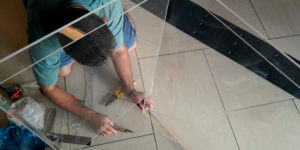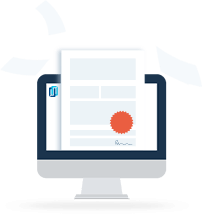
The building industry has already gone through a number of changes due to the COVID-19 pandemic, though the effects have largely been limited to operations. Many construction companies shifted office staff to work from home, and jobsite practices are under increased scrutiny around health and safety measures. But how is COVID-19 likely to change the building industry in the years to come? Looking back at how buildings changed after the 1918 influenza pandemic could teach us a thing or two.
The 1918 Pandemic Helped Create Modernism in the Building Industry
Mostly we think of modernism as a whim, an artistic expression of some fussy, academic architects and planners who decided that history was bad. But, like most major shifts in design, it was based on a major shift in society. And a big part of that shift came about because of the flu.

The germ theory had only been around for a few decades in 1918, but any doubt about the existence of microorganisms was removed by the pandemic. Germs, imagined as tiny monsters (the illustrations of the day made them look like little sharks and squid and dragons), were suddenly a legitimate terror. And buildings provided places for germs to hide and breed.
And so, for safety, architects and the public looked to modern clinics and hospitals for a new, more healthful design approach.
The decline of textiles
One of the first things to go was textiles. Wallpaper was out, as were tapestries, pillows, rugs, masonry and wood. Mouldings and scrollwork, ever the collectors of dust, were stripped away.
New finishes arrived, even in houses. Tile, concrete and metal were non-porous and could be cleaned and with new products like Listerine which, at the time, was sold as a household disinfectant.
Increase in light & fresh air
And other things came into fashion. Light was understood to kill the microscopic monsters, as was fresh air. So ceilings went up, windows grew, air was conditioned.

Even floor plans changed. A guest to your house could be packing a load of germs, so powder rooms were moved right up the front, allowing visitors to wash up before entering the rest of the house.
A shift in urban planning
On a larger scale, fear of contagion, along with lingering resentment against the tenement population of the day, led to the widening of streets, the demolition of high-density housing and the encouragement – by city planners and banks – of people to move to the suburbs.
This was the beginning of a radical re-imagining of cities and led to decades of large infrastructure work and an incredible expansion of a new type of housing, individual stick-framed units, each designed for a single family.
Zoning laws were enacted to support this ideal, separating business and industrial uses from residential areas. For sixty years, the flu pandemic changed the world that we built, with ramifications still at work over a hundred years later. And now we have a new pandemic, so we can depend on a similar re-imagining of the built world.
How the COVID-19 Pandemic Could Change the Building Industry
It’s too soon to know, but we can make some predictions about what kinds of changes we’re in for as a result of the current pandemic. Most will likely be about where and how we gather.
The hospitality industry is sure to see changes. Restaurants and bars are two of the hardest hit businesses, since they’re predicated on crowd density and people having disposable income. It’s estimated that half of the bars and up to 75% of the restaurants in business before the pandemic will never reopen.
Hotels, similarly built around travel and leisure, stand largely empty and we don’t have any idea how long this will last. When they do return, they’ll be different. Renovations are already underway to provide touchless environments, filtered HVAC and distanced dining options. Some new designs are incorporating modular buildings to provide more distance between rooms.
In office settings, things have already changed in ways that seem to be permanent. People will increasingly work remotely. Elevators that travel many floors are now difficult to safely use.
Ducted HVAC systems are a potential source of disease spread and will likely be reconfigured or replaced with more localized systems. Open office plans are likely over for the time being. Cubicles may become more like bubbles.
And that’s not even considering changes to places like educational settings and hospitals, which will see some of the most dramatic reconfiguring. Throughout the built environment, change is on the horizon. It will be big and it will come quickly.
Pandemic Takeaways for the Building Trades
It may seem like this is a distant future, but there is disruption in the industry right now. Money is tighter, foreclosures are up, and the fate of development is in limbo. But there are things you can do right now to help you get through the disruption with your business and your bank account intact.
Short Term: Protect Current Projects
There are things in the projects you’re doing right now that can be affected and should be addressed.
Look at any additional expenses you’re encountering due to COVID-19 — from providing PPE, to scheduling smaller crews, to working around other trades — and try to get those costs accommodated in your contract.
Be sure you’re familiar with any force majeure clauses in your contracts so that you’re doing all you can to ensure collection should the pandemic force a job into temporary — or permanent — shut down.
Check your supply chain and look for alternative sources for products that may become difficult to find or whose cost will increase drastically due to the pandemic. Document those possibilities now and make sure your client is aware of any potential disruptions or added costs.
Check your contract for an Escalation Clause. If you have one, make sure it covers all of the above possibilities and is enforceable for changes in costs attributed to the pandemic. If you don’t have an escalation clause, see if you can negotiate one to be added. It will be easier for you and your client in the long run to agree to terms before a crisis happens.
Take steps to protect your cash flow and track your mechanics lien and notice deadlines.

Protect & speed up every payment
Learn how Levelset can help you easily manage your lien rights on every project to ensure your payments are always protected.
Send conditional lien waivers and any preliminary notices now. There has been a surge of payment disputes since the pandemic began and cash flow at every level is threatened.
Be diligent in putting yourself in the best possible position to be paid.
Long Term: Prepare for Future Projects
In addition to the above steps, which all apply to your future contracts as well, it might be a good time to think about the really big picture. In order to keep getting paid, you have to keep getting work, which could require a pivot.
Home and work spaces will likely become more compartmentalized, especially when created for public or shared use. In recent months, plexiglass installation has skyrocketed as grocery stores and restaurants have rushed to install see-through virus barriers.
“This is a good time to anticipate the changes coming that will affect your work.”
If you’re an HVAC installer, you might see less demand for sheet metal work and more for mini split systems. You might also want to be ready to install UV light systems in filtration, as many hospitals already do. This could be a high-demand skill.
People can’t travel, and many of those with the means are reallocating their travel funds to other pleasures. Demand for swimming pools, for instance, is suddenly very high. If you’re a concrete finisher, it might be a good time to get familiar with using a gunite rig.
Is carpet out, as rugs were after 1918? Maybe. It might pay, if you’re a flooring company, to make sure you have the crew to install tile.
If you’re a commercial kitchen contractor, it may be worthwhile to pick up a line of high-end residential appliances and parlay your expertise into the homes of those learning to cook in place of eating out.
This is a good time to check out design and architecture sites, trade magazines, and construction industry blogs to try and anticipate the changes coming that will affect your work. By the time the ideas move from coming trends to the jobsite, you should be ready.
Fortune favors the prepared
Of course it’s impossible to know for sure how this will all play out, but history reveals that there are plenty of things you can do to make sure you get paid now, and that you are prepared to take advantage of changes in an unpredictable future.
Construction executives and managers should be preparing now for the building industry of the future after COVID-19. The threat of the next pandemic will stay with us for some time to come. Those best prepared to adopt new design and construction trends — and get paid for their work on every job — will be in the best position to ride the next post-pandemic building wave.
